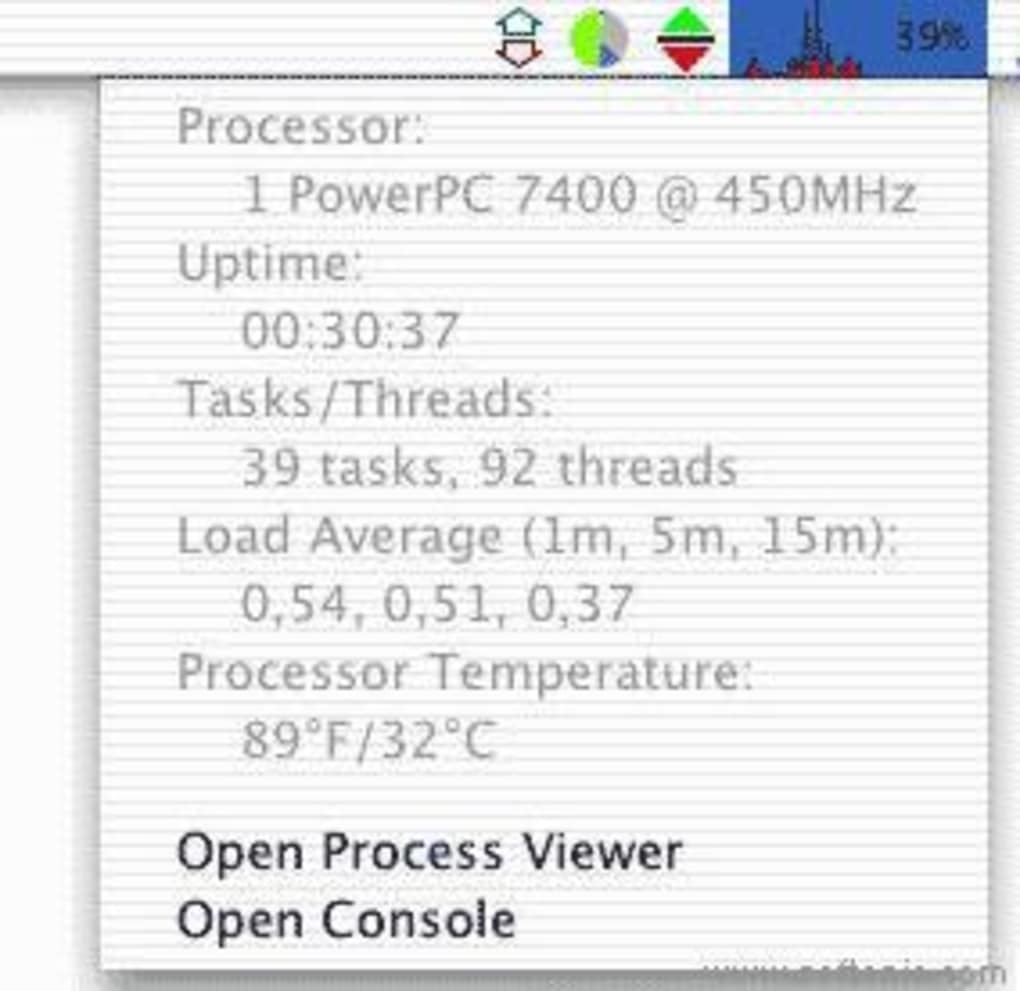- Apr 08, 2008 Windows, Linux & Others on the Mac MacRumors attracts a broad audience of both consumers and professionals interested in the latest technologies and products. We also boast an active community focused on purchasing decisions and technical aspects of the iPhone, iPod, iPad, and Mac platforms.
- Keeping an eye on your Mac’s resources is highly recommended, especially if you are experiencing performance issues. MenuMeters is a Preferences Pane that allows you to visualize statistics about your CPU, disk, memory, and network usage. The pane places 4 different menus in your status bar, one for.
MenuMeters is a set of CPU, memory, disk, and network monitoring tools for Mac OS X. Although there are numerous other programs which do the same thing, none had quite the feature set I was looking for. Most were windows that sat in a corner or on the desktop, which are inevitably obscured by document windows on a laptop's small screen.
As you very well know and is shown in the screenshot above, there can be various utilities put on the right hand side of the menu bar. There are in fact two types of such menu bar items, one known as NSMenuExtra'>NSMenuExtra's and another known as NSStatusItem'>NSStatusItem's. The former are loaded and displayed by SystemUIServer'>SystemUIServer, a process provided by the system. The latter can be displayed by any app written by any developer. One good thing about the former is that you can rearrange them by ⌘-dragging the menu items. I have no idea why ⌘-dragging was not provided for the latter by the system. (On macOS Sierra 10.12, Apple finally implemented and enabled ⌘-dragging for all NSStatusItem's, including this port of MenuMeters. But this happened later than the need to port MenuMeters to El Capitan 10.11.)
Anyway, due to this better behavior of NSMenuExtra's, people often wanted to write their own. In fact until and including OS X 10.1, Apple allowed it. But since 10.2, Apple had a code that blocked SystemUIServer to load non-system-provided NSMenuExtra's. But until Yosemite, there was a known way to work around it, available as an open-source code as MenuCracker. MenuMeters used this to inject their own NSMenuExtra's to SystemUIServer; in fact MenuMeters' author is one of the main authors of MenuCracker.

Essentially, until Yosemite, SystemUIServer had a fixed list of allowed NSMenuExtras. MenuCracker was an NSMenuExtra that pretended to be one of those allowed ones, which, once loaded inside SystemUIServer, removed these checks, so that more NSMenuExtras can be loaded without any problem. In El Capitan, Apple added a more stringent check of the allowed NSMenuExtra's, and MenuCracker no longer works.

Mentimeter For Mac Os
Mentimeter For Macbook Air
So, how did I port MenuMeters to El Capitan, then? Well, I just gave up having ⌘-dragging. Then all I had to do was to, basically speaking, replace the occurrences of 'NSMenuExtra' by 'NSStatusItem', since the two APIs are almost the same.
MenuMeters is installed as an option on the System Preferences panel, from which you can decide what aspects of your system performance you want visible from your task bar.
MenuMeters can report on CPU usage, disk activity, memory status, and network traffic. The data can be displayed numerically, in graphs, or by combining both forms. The colors can also be customized.
Information on memory usage, processor usage, and Internet connection performance are also available from MenuMeters.
